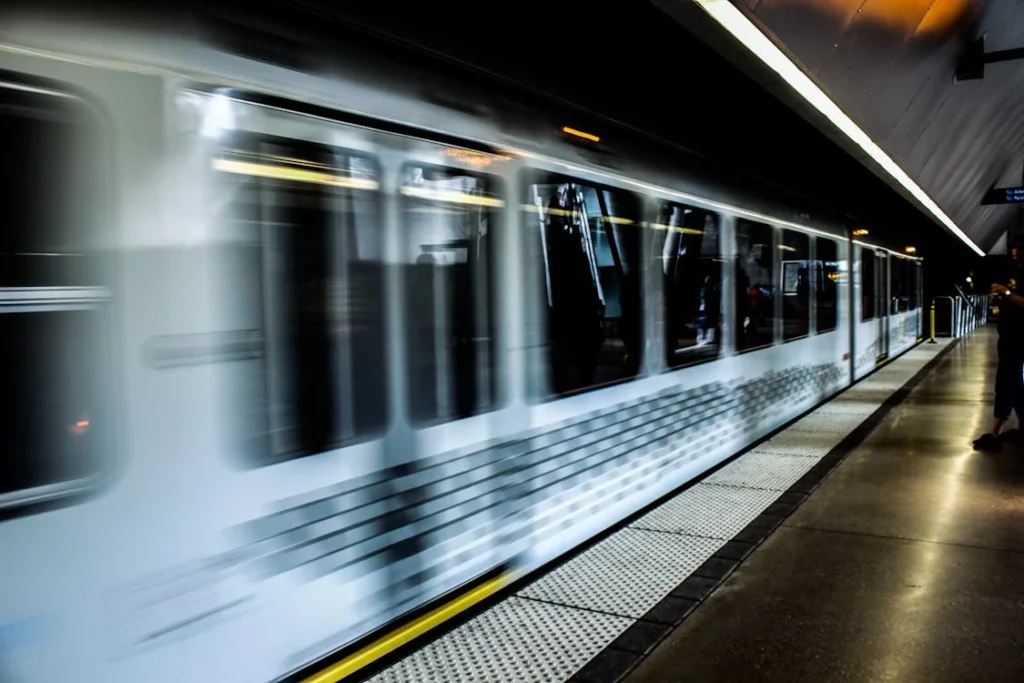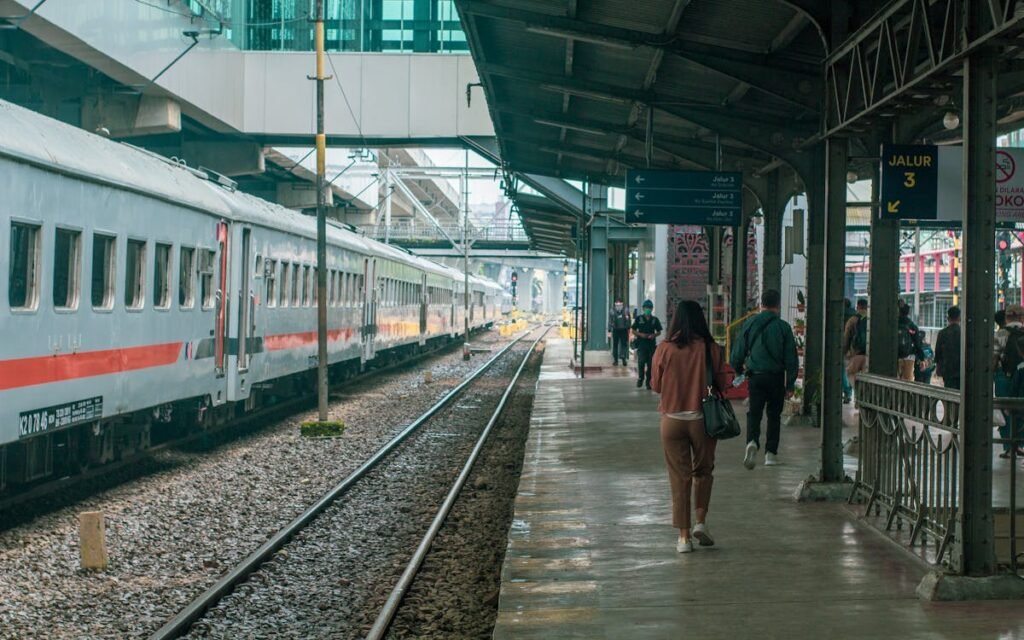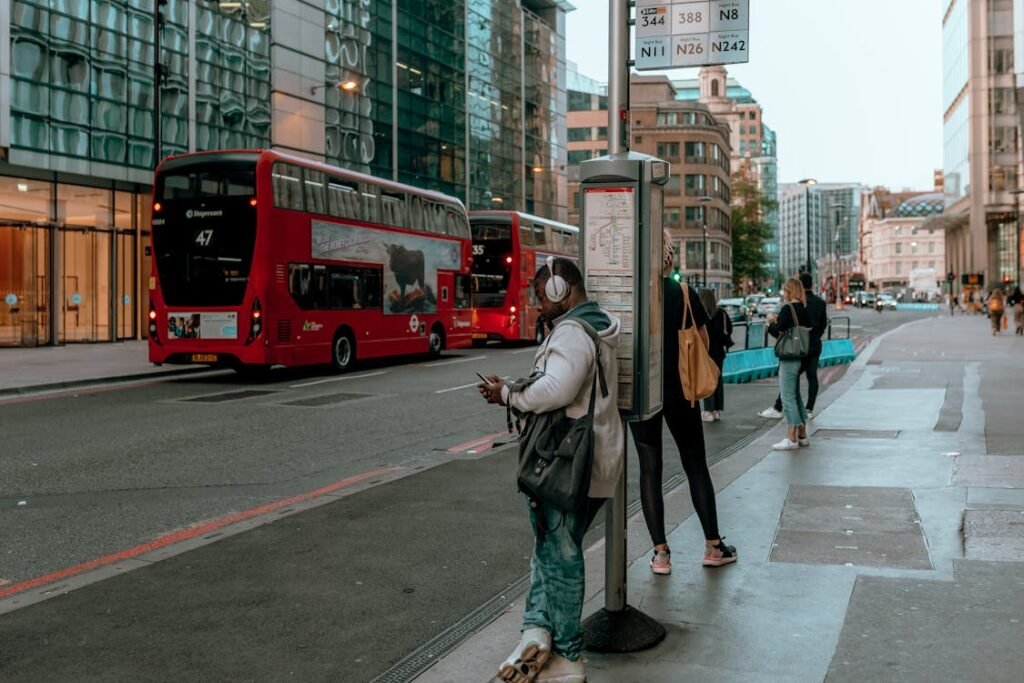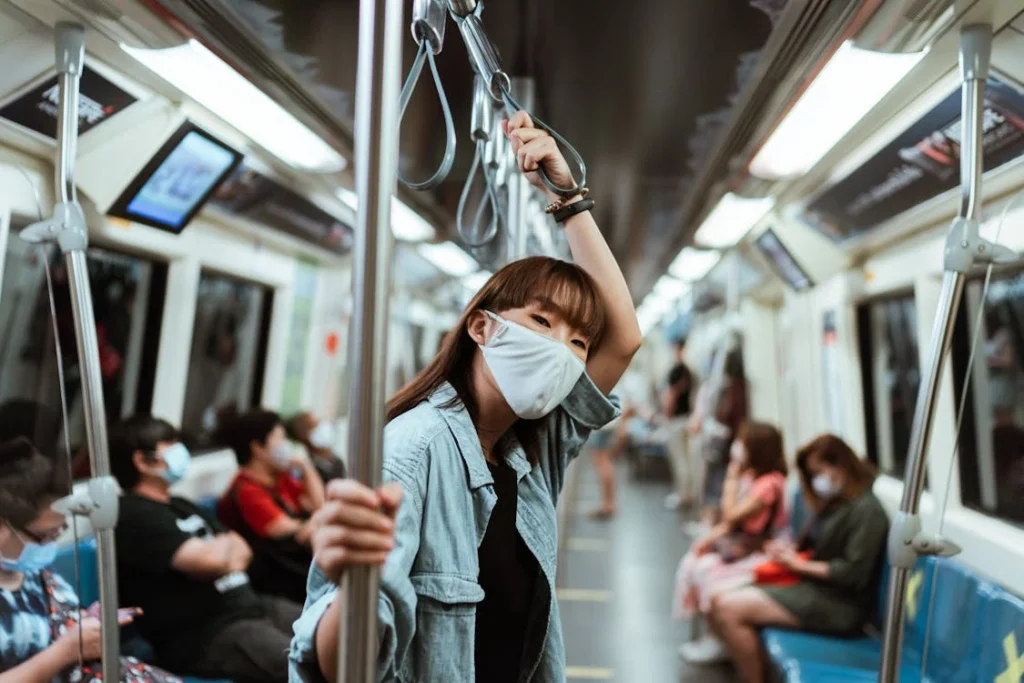Public transportation is a vital part of daily life, helping people travel to work, school, medical appointments, and social gatherings. However, for individuals with disabilities, navigating buses, trains, and other public transit options can often be challenging. Uneven platforms, inaccessible vehicles, and a lack of proper support can make travel frustrating, time-consuming, and even impossible in some cases.
Accessible public transportation is not just about convenience—it’s about independence and inclusion. When transport systems are designed to accommodate everyone, people with disabilities can move freely, participate in their communities, and live with dignity. Fortunately, many cities and countries are working to improve their transit systems, making them safer and more accessible for all.

Understanding Accessible Public Transportation
Public transportation should serve everyone, regardless of their mobility needs. Accessible transit systems ensure that individuals with disabilities can travel safely, independently, and with dignity.
While progress has been made in many cities, accessibility remains inconsistent. Some places offer well-designed systems with wheelchair ramps, audio announcements, and designated seating, while others still lack basic accommodations.
What Makes Public Transportation Accessible?
For a transit system to be truly accessible, it must consider the diverse needs of passengers. This includes individuals who use wheelchairs, crutches, prosthetic limbs, or other mobility aids, as well as those with visual or hearing impairments.
Features like step-free access, clear signage, and trained staff can make a world of difference.
A fully accessible system includes low-floor buses, which allow passengers to board without climbing steps, and trains with level boarding, eliminating the gap between the platform and the train.
Elevators and ramps at stations ensure that individuals using wheelchairs or walkers can move around easily. For those with visual impairments, braille signage and audio announcements help them navigate stations and vehicles safely.
Technology is also playing a major role in accessibility. Many cities now have real-time tracking apps that provide updates on wheelchair-accessible buses and trains, making travel planning much easier.
Contactless payment systems and smartphone-based ticketing allow individuals with limited dexterity to pay for fares without struggling with physical cash or paper tickets.
Challenges People with Disabilities Face in Public Transportation
Even in cities that have made progress, barriers still exist. Broken elevators, steep ramps, or narrow pathways can make travel difficult.
Sometimes, bus ramps are present but not maintained, leading to situations where wheelchair users must wait for another bus or rely on assistance from strangers.
Another common issue is poorly trained staff. Drivers and transit employees may not always understand how to assist passengers with disabilities, leading to confusion and delays.
In some cases, bus drivers may refuse to stop for wheelchair users or fail to secure mobility devices properly once passengers board.
For people with hearing impairments, the lack of visual information can be frustrating. Many train and bus stations rely solely on audio announcements, making it difficult for deaf passengers to receive updates about delays, route changes, or safety instructions.
Similarly, individuals with visual impairments may struggle in environments that lack tactile paving, braille signage, or clear directional audio cues.
In some cities, accessible transit options are available but limited in number. A bus fleet may have only a few accessible vehicles, or there may be a long wait for paratransit services, which are often booked in advance.
This makes spontaneous travel difficult and limits opportunities for work, education, and social engagement.

How to Navigate Public Transportation with Confidence
Accessible transportation is improving, but knowing how to plan your journey can make a big difference. Preparing ahead of time, understanding your rights, and using available resources can help make travel smoother and less stressful.
Planning Your Trip in Advance
Preparation is key when using public transportation. Before heading out, check if your route includes accessible buses, trains, or stations.
Many cities have official websites or transit apps that provide real-time updates on accessibility features. If you rely on elevators or ramps, confirm that they are in working order to avoid unexpected detours.
It’s also helpful to research alternative routes in case of service disruptions. Knowing which stops and stations have step-free access, wide doorways, or tactile guidance can prevent last-minute struggles.
If you’re unsure about a specific route, calling the transit authority’s customer service can provide valuable details about what to expect.
For individuals using paratransit services, booking early is crucial. Paratransit operates differently from regular buses and trains—it often requires scheduling rides at least a day in advance.
Some systems have limited availability, so securing a spot as early as possible can help avoid delays.
Making Boarding and Exiting Easier
Boarding a bus or train should be straightforward, but obstacles like high steps, crowded platforms, or malfunctioning ramps can create difficulties.
If you use a wheelchair, cane, or crutches, positioning yourself near the designated boarding area ensures that the driver or station staff can see you and provide assistance if needed.
On buses, drivers are required to lower ramps and secure mobility devices in designated areas. However, not all drivers are trained equally, and some may need reminders to provide assistance.
If you need help securing your wheelchair or adjusting a priority seat, don’t hesitate to ask.
For individuals with visual impairments, train stations with tactile paving and braille signage help with navigation. If these features are missing, requesting guidance from transit staff can be helpful.
Some cities also offer wayfinding apps that provide audio cues for navigating public spaces.
Handling Unexpected Challenges
Even with good planning, unexpected obstacles can arise. Elevators might be out of service, ramps may be blocked, or bus drivers may forget to stop at accessible stations. In these situations, knowing your rights and speaking up can make a difference.
Most public transit systems have policies requiring staff to assist passengers with disabilities. If a driver refuses to lower a ramp or a station lacks working accessibility features, reporting the issue can help improve future service.
Many transit agencies have dedicated accessibility hotlines where passengers can file complaints or request immediate help.
In crowded public transport, advocating for priority seating is important. While designated seats exist for people with disabilities, they are sometimes occupied by passengers who do not need them.
A polite but firm request usually resolves the issue, but if someone refuses to move, transit staff can step in.
If you experience repeated accessibility issues, reaching out to disability rights organizations or local advocacy groups can help bring attention to the problem.
These groups work with transit authorities to push for better policies, improved infrastructure, and stronger enforcement of accessibility laws.

Advocating for Better Accessibility in Public Transportation
While many cities have made progress in making public transportation accessible, there is still a long way to go. Barriers like broken elevators, poorly maintained ramps, and a lack of awareness among transit staff continue to make travel difficult for people with disabilities.
Advocacy plays a critical role in pushing for better policies, improved infrastructure, and a more inclusive transit system.
Understanding Your Rights as a Passenger
Laws protecting the rights of passengers with disabilities vary from country to country, but many governments have regulations in place to ensure accessible public transportation.
In India, for example, the Rights of Persons with Disabilities (RPWD) Act, 2016 requires public transport systems to be accessible and provide necessary accommodations.
Similarly, in the United States, the Americans with Disabilities Act (ADA) mandates accessibility features in buses, trains, and stations.
Knowing your rights is essential. If a bus does not stop for a wheelchair user, a train station lacks functional elevators, or transit staff refuse to assist passengers with disabilities, these are violations that should be reported.
Many transit agencies have accessibility officers or complaint hotlines specifically for handling such issues.
Passengers can also demand better services by providing feedback directly to transit authorities. Many cities have advisory boards or public meetings where individuals can voice concerns and suggest improvements.
When riders speak up, transit agencies are more likely to prioritize accessibility upgrades.
Working with Advocacy Groups
Disability advocacy groups play a key role in making public transportation more accessible. These organizations work with governments, transit agencies, and urban planners to ensure that accessibility is not an afterthought.
By joining or supporting these groups, individuals with disabilities can amplify their voices and push for long-term improvements.
Many advocacy groups also provide legal support for passengers who experience discrimination or are denied access to public transport.
If a transit provider continuously fails to meet accessibility standards, these organizations can help file complaints or legal action to enforce necessary changes.
Beyond legal advocacy, community groups often run awareness campaigns to educate the public about accessibility issues. These campaigns encourage able-bodied individuals to be more mindful of the challenges faced by people with disabilities.
Simple actions—like not blocking wheelchair ramps, giving up priority seating, and assisting visually impaired passengers—can make a huge difference in creating a more inclusive transit environment.
Encouraging Cities to Invest in Inclusive Infrastructure
One of the biggest challenges in creating fully accessible transit systems is the cost of infrastructure upgrades. Governments and transit agencies may delay improvements due to budget constraints, but strong advocacy efforts can push accessibility higher on the priority list.
When cities invest in universal design, everyone benefits. Features like step-free access, wider doorways, clear audio and visual announcements, and better signage make transportation easier not just for people with disabilities but also for the elderly, parents with strollers, and travelers with heavy luggage.
Advocacy efforts can also push for more inclusive policies, such as mandatory accessibility training for transit staff. Many accessibility issues arise not because of a lack of physical infrastructure but because of poor awareness and training among drivers and employees.
When staff members understand the needs of passengers with disabilities, they can provide better support and ensure that accessibility features are used properly.
The Role of Technology in Advocacy and Accessibility
Technology is making it easier than ever to track accessibility issues and demand change. Many passengers now use social media and transit apps to report inaccessible stations, faulty elevators, or uncooperative staff in real time.
Some advocacy groups even use crowdsourced data to map out accessibility conditions, helping individuals plan their routes more effectively while also highlighting problem areas that need improvement.
Artificial intelligence and smart city technology are also contributing to better accessibility.
Some transit systems are experimenting with voice-activated kiosks, navigation apps for visually impaired passengers, and real-time accessibility updates to make travel smoother for everyone.
By embracing technology and continuing to advocate for change, we can ensure that public transportation systems become more inclusive for future generations.

Future Innovations in Accessible Public Transportation
Public transportation is evolving, and cities worldwide are exploring new ways to make travel more accessible. From smart infrastructure to AI-powered assistance, technology is playing a key role in shaping the future of inclusive mobility.
These innovations are not just making transit easier for people with disabilities but also improving the experience for all passengers.
Autonomous Vehicles and On-Demand Accessibility
Self-driving buses and ride-hailing services are set to revolutionize public transportation. Autonomous vehicles have the potential to provide more personalized and reliable mobility solutions for people with disabilities.
Unlike traditional buses, which follow fixed schedules and routes, on-demand autonomous shuttles can be summoned through apps, ensuring that accessible transport is available exactly when and where it’s needed.
Some cities are already testing autonomous wheelchair-accessible taxis, equipped with ramps and voice-activated controls. These vehicles remove the need for drivers to assist with boarding, giving passengers greater independence.
As the technology advances, these services could become a standard part of urban transit systems, reducing wait times and offering a safer, more convenient travel option.
Smart Stations and AI-Powered Assistance
Public transit stations are becoming smarter, thanks to artificial intelligence and the Internet of Things (IoT). Many cities are now introducing AI-powered kiosks that provide real-time travel updates, route guidance, and accessibility information.
These kiosks use voice commands and touch-free interactions, making them ideal for individuals with visual impairments or limited dexterity.
Additionally, smart elevators and escalators are being installed in many transit hubs. These systems can self-diagnose technical issues and send alerts before they break down, reducing the likelihood of unexpected failures that leave wheelchair users stranded.
Some transit networks are also testing AI-based crowd management, which helps redirect foot traffic to ensure smoother movement for passengers with mobility challenges.
Navigation Apps for Barrier-Free Travel
Digital mapping and navigation apps are making it easier to plan accessible routes. Unlike standard GPS apps, these specialized tools provide information about wheelchair ramps, step-free access points, and locations of elevators.
Some even include real-time crowdsourced updates from other users, notifying passengers of potential obstacles like broken lifts or blocked pathways.
For individuals with visual impairments, AI-powered voice navigation apps are proving to be game-changers.
These apps use real-time audio cues and object recognition to guide users safely through transit stations, helping them locate entrances, ticket counters, and boarding areas with ease.
Inclusive Ticketing and Payment Systems
Traditional ticket machines and turnstiles can be difficult for passengers with disabilities to use. Contactless and smartphone-based payment systems are addressing this issue, allowing individuals to pay fares with a simple tap.
Many cities are now integrating voice-controlled ticketing systems and facial recognition technology to make transit access even smoother.
For people with cognitive disabilities or memory impairments, some transit agencies are offering personalized travel cards.
These smart cards store user preferences, automatically selecting the most accessible routes and providing step-by-step journey assistance through connected mobile apps.
Sustainable and Accessible Transportation
As cities shift toward eco-friendly transportation, accessibility must remain a priority. Many new electric buses and trains are being designed with low-floor access, spacious interiors, and automatic wheelchair ramps.
These vehicles produce lower emissions while ensuring that public transport remains inclusive.
Some cities are also investing in adaptive cycling programs, providing handcycles and electric tricycles for individuals with mobility impairments.
These initiatives promote independent travel and sustainable mobility, ensuring that everyone can benefit from greener transportation options.
The Road Ahead: Creating a Truly Inclusive Transit System
The future of public transportation lies in universal design—creating transit systems that serve all passengers equally.
This means going beyond compliance with disability regulations and ensuring that every aspect of transportation, from ticketing to station layout, is built with accessibility in mind.
As cities continue to innovate, collaboration between governments, transit agencies, disability advocates, and technology developers will be crucial. By working together, we can build public transportation systems that are barrier-free, efficient, and empowering for everyone.

The Economic and Social Impact of Accessible Public Transportation
Accessible public transportation does more than just help individuals with disabilities get from one place to another—it has a profound impact on society as a whole.
When transit systems are designed to accommodate everyone, they create opportunities for employment, education, healthcare access, and social inclusion.
A well-functioning, accessible transport network benefits not just people with disabilities but entire communities and economies.
Breaking Barriers to Employment and Education
One of the biggest challenges for individuals with disabilities is finding reliable transportation to work or school. Many job opportunities and educational institutions require daily travel, and if public transport is not accessible, it can severely limit career and learning prospects.
Some people with disabilities are forced to rely on expensive private transport services, while others may have no choice but to stay home due to inaccessible transit options.
When public transportation is fully accessible, it enables individuals to work independently, attend job interviews, pursue higher education, and take part in professional training programs.
This not only improves their financial stability but also helps businesses and organizations benefit from a diverse and talented workforce. Inaccessible transit should never be a reason for someone to be excluded from contributing to society.
Improving Access to Healthcare and Essential Services
For many individuals with disabilities, regular medical visits are a necessity. Whether it’s physical therapy, doctor’s appointments, or specialized treatment, accessing healthcare can become difficult if transportation options are limited.
Many people miss crucial medical appointments simply because they cannot get to the hospital or clinic.
Cities that prioritize accessible public transit help ensure that people can reach medical facilities without unnecessary stress. Features like low-floor buses, step-free trains, and accessible taxi services allow individuals to travel to their appointments independently and on time.
This leads to better health outcomes, fewer emergency situations, and a stronger overall healthcare system.
Encouraging Social Inclusion and Community Participation
Transportation is a key part of social life. Whether it’s visiting friends and family, attending community events, or simply enjoying a day out, accessible public transport allows people with disabilities to engage fully in society.
A lack of mobility can lead to social isolation, which can negatively impact mental health and overall well-being.
When buses, trains, and metro systems are designed with accessibility in mind, they enable people with disabilities to participate in cultural, recreational, and social activities just like everyone else.
Being able to visit public parks, restaurants, theaters, and shopping centers independently creates a sense of belonging and inclusion.
Public spaces and events also become more inclusive when transportation barriers are removed. Cities that invest in accessible transport are more likely to attract tourism from individuals with disabilities, further boosting local economies and businesses.
Boosting Economic Growth Through Inclusive Transportation
Investing in accessible public transport is not just a social responsibility—it’s an economic opportunity. Studies have shown that when transportation is accessible, more people can work, shop, and contribute to the economy.
Businesses benefit from a larger customer base, and governments see increased tax revenue from a more active workforce.
Inaccessible transportation, on the other hand, results in lost economic potential. When people with disabilities are unable to work or shop due to mobility challenges, businesses lose customers, and economies miss out on valuable contributions from skilled professionals.
Ensuring that everyone can move freely within a city strengthens the entire economic system.
Governments that invest in inclusive infrastructure not only improve the lives of individuals with disabilities but also enhance the overall efficiency of their transportation networks.
Well-designed, accessible transport benefits a wide range of people, including elderly individuals, parents with strollers, and travelers carrying heavy luggage. It creates a more efficient, user-friendly system for all passengers.
A More Equitable Future Through Accessible Transportation
Public transportation should never be a privilege—it should be a right for everyone.
Creating an accessible transit system is about more than ramps and elevators; it’s about ensuring that every individual, regardless of ability, has the freedom to move, explore, and engage with the world around them.
As cities continue to grow and develop, making accessibility a priority will shape a more inclusive, fair, and economically vibrant society. When everyone has the opportunity to participate in work, education, and social life without barriers, we all move forward together.

Conclusion
Accessible public transportation is more than just a convenience—it’s a fundamental right that allows people with disabilities to live independently, pursue careers, access healthcare, and participate in society. When transit systems are designed with inclusion in mind, they create opportunities for millions while strengthening economies and communities.
While progress has been made, many challenges remain. Broken infrastructure, poorly trained staff, and limited accessible routes still prevent many from traveling freely. Advocacy, technology, and stronger policies can drive lasting change, ensuring that no one is left behind.
At Robobionics, we believe in empowering individuals through technology and innovation. Just as our prosthetic solutions restore independence, accessible transportation ensures freedom of movement for everyone. By pushing for better policies and more inclusive designs, we can create a world where public transportation is open, safe, and welcoming for all.
The future of accessible transit starts with action—because mobility should never be a barrier to living life fully.



